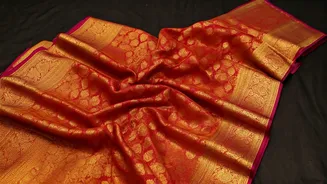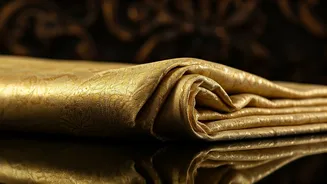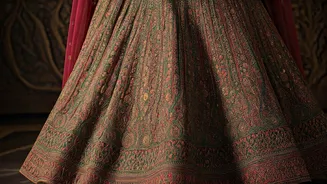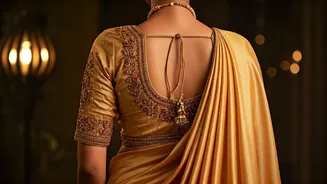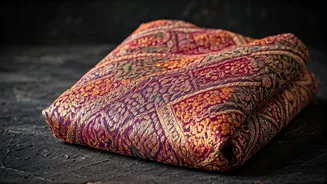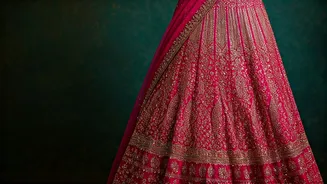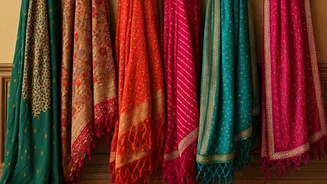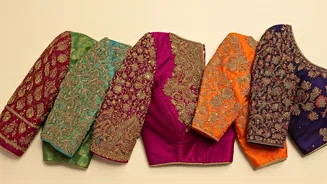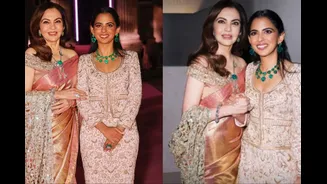Check the Silk
The first step in verifying a Banarasi saree is to assess the quality of the silk used. Authentic Banarasi sarees are primarily crafted from pure silk.
You can identify genuine silk by its smooth texture, fine weave, and slight sheen. A simple way to test is the 'burn test': if you carefully burn a small thread from the saree, real silk will turn to ash, and the smell will be akin to burning hair. This is in stark contrast to synthetic fabrics that melt or produce a plastic-like smell. Always inquire about the silk type and origin from the seller, and look for certifications to ascertain authenticity.
Examine the Weave
The weaving technique is a significant identifier of a genuine Banarasi saree. The intricate patterns and designs are woven on a handloom or, in some cases, a power loom. Examine the saree closely for the complexity and quality of the weave. Authentic Banarasi sarees feature detailed motifs, often incorporating gold and silver zari. Look for clean lines, well-defined patterns, and a dense weave. Moreover, the backside of the saree reveals the precision of the weave. The patterns should be consistent, with minimal loose threads or imperfections. The more elaborate the design, the more time and skill required, hence influencing the saree’s authenticity and value.
Assess the Zari
Zari work is another key element that differentiates an original Banarasi saree. Zari is the metallic thread (traditionally real gold or silver) used to create the elaborate designs. In genuine sarees, the zari should have a consistent sheen and intricate detailing, particularly in the borders, pallu, and motifs. Inspect the zari for any signs of tarnishing or color fading. Pure zari will not easily lose its luster. In contrast, many imitations use copper or other synthetic materials. The density and quality of the zari reflect the artistry and cost of the saree. Examine how well the zari is integrated into the silk weave; it should be securely woven and not easily prone to unraveling.
Evaluate Design Motifs
The design motifs are a unique aspect of Banarasi sarees, providing hints to the authenticity of a saree. Traditional motifs like floral patterns (buti), leaf designs (bel), and Mughal-inspired patterns are common. Study the details of these motifs. Authentic designs feature fine detailing, accurate symmetry, and a clear representation of the chosen patterns. Note how the motifs are distributed across the saree. A genuine Banarasi saree generally has a balanced and harmonious pattern. In contrast, in cheaper imitations, motifs may appear distorted or lack the intricate detailing that characterizes an authentic piece. Inspect the overall design composition and aesthetic appeal.
Consider the Price
The price is a good indication of the authenticity of a Banarasi saree. Genuine sarees require skilled craftsmanship, high-quality materials, and time-intensive production methods, which translate into a higher price. Be cautious of sarees sold at significantly lower prices than the average market rate for comparable designs. While sales and discounts are possible, an extremely low price is often a sign of an imitation. Furthermore, consider where you are purchasing the saree. Reputable stores and vendors are more likely to offer authentic products. Ask for certification or documentation if available, and don't hesitate to seek a second opinion or expert advice before investing.
